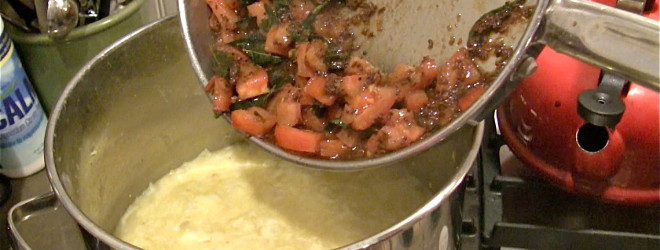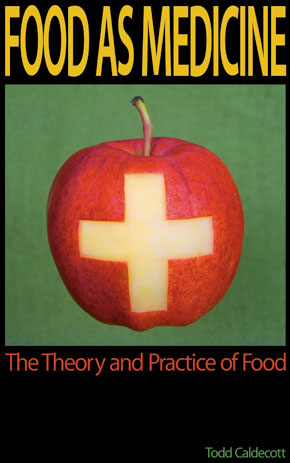Taken from: Food As Medicine: The Theory and Practice of Food
Kitchari is the classical Ayurvedic panacea, eaten whenever there is ill health or during a therapeutic regimen such as panch karma and detoxification. Essentially made from rice, kitchari is a universal food found in other cultures, with similar sounding names such as ‘kushari’ in the Middle East and ‘congee’ in China. There are an infinite array of variations, and based on the herbs and spices chosen, can be prepared to reduce vata, pitta or kapha. The following recipe is definitely Indian-inspired, using the herbs and spices of Ayurveda to enhance digestion.
The following recipe calls for fermented, whole grain mung and brown rice. Prepared in this way, kitchari is more nourishing, but harder for digestion. For people with weak digestion, or undergoing the graduated diet, the whole grains can be substituted with white basmati rice and washed mung dahl. While these don’t need to be fermented before use, ensure that you soak them overnight to enhance digestibility.
This recipe produces a soupy kitchari which is easy for digestion, but if you are looking to make this dish more substantial, reduce the amount of water to around 5-6 cups.
Ingredients
2 cups brown or white basmati rice (fermented, p. 144)
1/2 cup green or washed mung dahl (fermented, p. 144)
8 cups water
2 tbsp. ghee
1 tbsp. coriander powder
2 tsp. cumin seed
1 tsp. mustard seed
2-3 cinnamon sticks, broken into large pieces
10-12 cardamom pods, crushed
1 tsp. whole black pepper
½ tsp. hing powder
½ tsp. turmeric powder
sea salt, to taste
Directions
If you are using the whole grains, ferment (p. 144) the rice and mung beans first, and drain before use. For the white rice and washed mung dahl, simply soak over night in water. When the rice and beans are so prepared, melt ghee over medium heat in a large pot, and add in cumin seed, mustard seed, cinnamon bark, cardamom pods, black pepper and hing. Just as the mustard seeds start to pop, add in the coriander powder, turmeric and salt. Stir for another half a minute or so, and then add in the rice and dahl, frying in the fat and spices for a few more minutes before adding in 8 cups water or stock. Bring to a boil, reduce to a simmer and cook for 2-3 hours (~1 hour for white rice and washed mung dahl), until the rice and dahl is soft.
Asian kitchari is a variation on this recipe, substituting short grain brown rice for basmati rice, and adzuki bean for mung. Follow the same recipe but use flavors such as fresh ginger, garlic, seaweed and tamari. When it’s done mix in a couple tablespoons of miso paste and garnish with fresh chopped shiso leaf or cilantro.



We eat kitcheree at least once or twice a week here and though I have cooked it with fully sprouted mung beans i have yet to ferment them, (nor the rice, which typically I have just cooked as is, without even the recommended soaking). We ferment a lot of other stuff here, so I am intrigued to find out more about fermenting rice and mung as a kitcheree pre-treatment. This info you have provided may have just revolutionized our operation and combined two favorite and frequent activites–making kitcheree and fermenting stuff! 🙂 Thanks again for the great blog!
Hi Ambika
The process for fermentation is simple. Here is that section, taken from my new book, Food As Medicine, page 127:
“Fermentation is a key step in ensuring the digestibility of foods such as cereals, legumes, nuts and seeds all of which contain antinutrient factors (ANFs) such as phytic acid and trypsin inhibitors that impair digestion and inhibit the absorption of nutrients. The procedure to ferment these foods begins with making a starter. Soak the nut, seed, grain or legume in water for 24 hours, setting aside 10% of the soaking water after draining. The next day repeat the process with fresh ingredients, but add in the reserved soaking water. By the fourth round this results in a bacterial culture that can reduce ANFs such as the phytic acid by 96% within 24 hours of soaking. While fermentation reduces ANFs it may not remove components such as lectins, and nor may the food be processed sufficiently for optimal digestion, requiring additional measures such as cooking.”
Thanks, Todd. That is very helpful information for us to have. Fermentation is such a magical alchemy, and such a lost art in this day and age. It’s great that you are helping to keep this knowledge alive and make it so freely available to anyone who is interested.
When you say to “repeat the process with fresh ingredients the next day,” do you mean the same soaked nut seed or legume, but fresh water, to which the 10% reserved water from the previous soaking is added? Or do you mean to discard the original nut seed or legume as well and use some fresh along with the fresh water and the 10% from the previous soaking? Also, can I keep a little of this starter culture in the fridge between batches? I sometimes rest my kefir grains in the fridge in a little milk or even freeze some grains and then take them out or thaw them and put them into fresh milk to ferment it. How do you keep this grain/nut/seed water culture going between uses?
I think I need to buy your book! 🙂